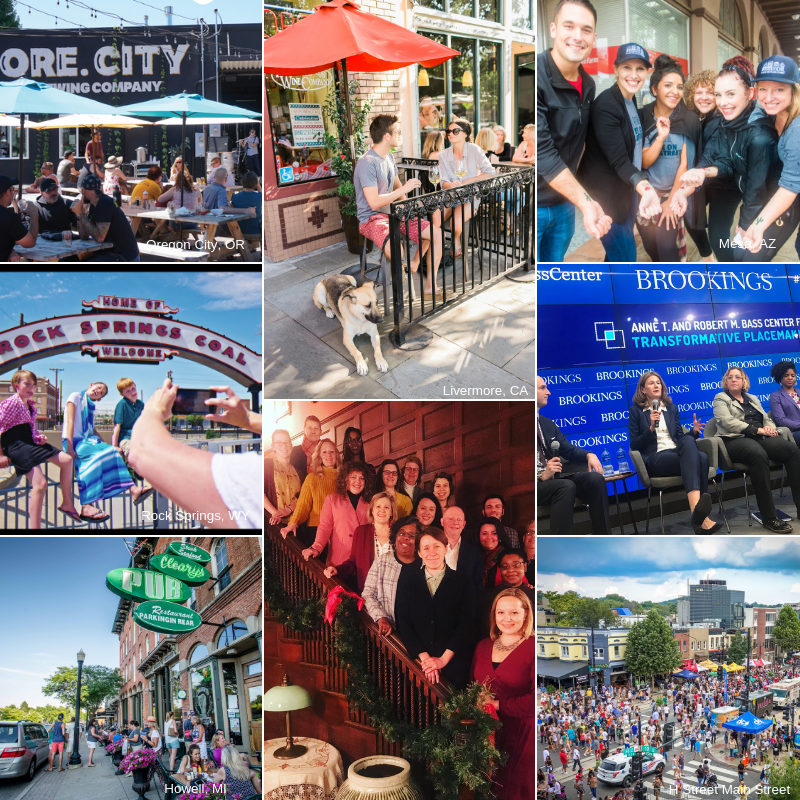January 7, 2019 | A Year in Review: Main Street's Future is Strong | 
As we enter the new year, I’ve been reflecting on the National Main Street Center's work in 2018 and the state of the field more broadly. I wanted to share these thoughts with you as a way to continue to build a dialogue around what’s working on Main Street, what we’re facing as a field, and where we’re going as a movement.
When I take a step back, I’m struck by the gulf between the stories of decline and stark economic realities that dominate headlines on the one hand, and the optimism and sense of momentum I’ve witnessed in the work of Main Streets on the other. Looking back at what we’ve accomplished together as a network in 2018, and what’s on the horizon for 2019 and beyond, I’m confident now more than ever that Main Street’s future is strong. The enthusiasm, innovation, passion, and grit that fuels so many successful Main Street efforts across the country is an encouraging proof point in today’s fractured political and economic environment.
This is not to say that we don’t face real challenges in our work to support thriving local economies. The work of Main Street revitalization has always been an uphill battle, though many of the issues we face today are different than the ones that spurred the Main Street Program’s creation 40 years ago. We’ve all seen the headlines - “The Hard Truths of Trying to ‘Save’ the Rural Economy,” “Winners and losers from Amazon’s HQ2 decision,” and “How Urban Core Amenities Drive Gentrification and Increase Inequality” to name a few. Changing demographics and the urbanization of our economy pose very real challenges to rural America. In big cities, smokestack chasing economic development policies and rapid development in “hot areas” are threatening the sustainability of many of our neighborhood commercial corridors. And, major global issues ranging from climate change to the opioid crisis to gentrification are increasingly impacting the work of Main Streets on a day-to-day basis.
While the context in which we work is, in many ways, more challenging than ever, our network is at the forefront of a movement committed to solutions. As James and Deborah Fallows (who will present a keynote at Main Street Now in Seattle) argue in their book Our Towns, in the face of dysfunction on a national level, local leaders, innovators, entrepreneurs – and I’d add Main Street Directors – are busy crafting solutions with practical-minded determination.
Last year, that practical-minded determination translated into impressive impact in Main Street America communities. Together, our network catalyzed $4.48 billion in reinvestment, 8,737 building rehabilitations, 30,294 net gain in jobs, and 6,211 net gain in new businesses. And, for every dollar invested in a Main Street program, local communities saw an average reinvestment of $26.43 in their downtown district.
And, while these numbers are powerful, they only tell a small fraction of the story. You need to look no further than last year’s Great American Main Street Award winners – Howell, Michigan, Oregon City, Oregon; and Rock Springs, Wyoming – for examples of how local Main Street programs are supporting legacy businesses, attracting entrepreneurs, and investing in place to improve local quality of life. The Main Street Approach – our tried and true framework – continues to work in communities of all stripes. From H Street in Washington, D.C to Livermore, California, and many places in between, the Main Street Approach gives communities the tools to invest their time, people-power, and resources into what works. Ed McMahon, NMSC’s Board Chair, made this point this point so eloquently in his recent piece for us, A Proven Economic Development Strategy.
In the coming year, we look forward to bringing new resources, partnerships, and research to the network to help advance more of this kind of work. You can expect a tool-kit on Main Street transportation, new research with the Brookings Institute and Project for Public Spaces through the Bass Center on Transformative Placemaking, grant opportunities for community projects, advocacy tools, and so much more.
I count myself as fortunate to have a job that brings me into contact with such an optimistic, solutions-minded group of individuals. In the coming year, my hope is that together, we will drive a new set of headlines – ones about the hope and promise of Main Streets as places of possibility. Thank you for all that you do, and I look forward to supporting your work in 2019.
Sincerely, Patrice Frey, President and CEO
Patrice Frey, President and CEO
National Main Street Center




